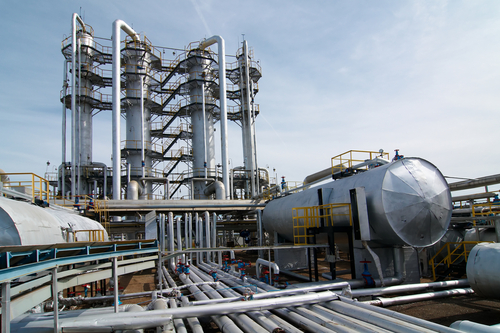
A Pennsylvania bill approved by the General Assembly that’s sitting on the governor’s desk awaiting action by March 28 would provide an energy and fertilizer manufacturing tax credit for projects located in the northeastern part of the Commonwealth that could transform the entire state’s economy, according to a new study by the Pennsylvania Manufacturers’ Association (PMA).
“Attracting and retaining natural gas synthesis manufacturing ought to be a priority of policymakers at the state and federal level to ensure this prosperity occurs in our Commonwealth as opposed to a competitor state,” said PMA President and CEO David N. Taylor.
The IMPLAN Economic Analysis: Two New Natural Gas Synthesis Manufacturing Plants in Northeast Pennsylvania, released on Tuesday by PMA, focuses on two parts: the construction of the natural gas synthesis manufacturing facilities in Clinton and Luzerne counties, and the new, permanent jobs created in the nitrogenous fertilizer manufacturing, the organic chemical manufacturing, and natural gas extraction fields needed to sustain the manufacturing operations at the two plants.
For instance, the total economic impact of 150 new, combined-permanent direct jobs at a new nitrogenous fertilizer manufacturing facility in Clinton County, Pa., would result in a total of more than 526 jobs including indirect and induced positions, over $83 million of labor income, and roughly $119 million of value added, spurring almost $261 million in total economic output a year, according to the PMA study.
And based on 150 combined-permanent jobs at a new manufacturing facility in Luzerne County, Pa., the total economic output would total $263.5 million per year when the direct, indirect and induced jobs are considered, the study notes.
“The results are reflective of one year of manufacturing activity; however, these totals will sustain economic growth in the region throughout the life of the plant,” the study states.
The preliminary cost for each project is estimated at $477 million, the report said. Each facility would take a minimum of 30 months to construct and would require 800 construction jobs throughout the construction process.
“Based on the results, it’s clear that these projects would be transformative to northeast Pennsylvania, and the Commonwealth as a whole,” Taylor said. “Entire economies are centered around this type of economic activity and will sustain regions for generations to come.”
Indeed, if the governor signs House Bill (HB) 1100, such manufacturers would be enticed to build these facilities due to the bill’s proposed tax credits, which would be provided to manufacturers using Pennsylvania-produced methane to make ammonia, urea and methanol if the company invests at least $450 million in a project that also must create at least 800 temporary and/or permanent jobs.
The possibility of two natural gas synthesis plants locating in northeast Pennsylvania would be a statewide economic boon, PMA says.
In this region’s part of the Marcellus formation, the gas is “dry,” meaning it’s almost exclusively methane, which is used in natural gas synthesis manufacturing plants to create hydrogen and nitrogen in the form of ammonia and urea, and methanol, according to the PMA study.
These products are themselves manufactured goods, but they are also the feedstock for many other manufacturing processes and products, sustaining agriculture, transportation and chemical manufacturing industry clusters, the study says.
“Many of these products would be used in agribusiness,” House Speaker Mike Turzai (R-Allegheny) said during a news conference earlier this month. “We will have facilities that will make use of this tax credit and create permanent jobs and create jobs constructing these facilities. This is going to be a game changer for the Commonwealth of Pennsylvania.”
The tax credit established under HB 1100 for methane manufacturing would be similar to that of the state’s Resource Manufacturing Tax Credit, Act 85 of 2012, which is production-based — meaning not one cent of tax liability is offset until the projects are completed, employees are hired, and products start flowing from the plants, the PMA says.
Additionally, HB 1100 — which passed with bipartisan support in both the Pennsylvania House and Senate — includes provisions that would require the payment of prevailing wages on any construction, reconstruction, demolition, alteration or maintenance of the facility, and a company must make a good faith effort to employ local construction workers.
At the same time, HB 1100 would require a company to purchase and use Pennsylvania natural gas to produce a Pennsylvania-manufactured petrochemical product.
The direct, indirect and induced jobs created by the construction jobs at these plants totals 2,229, according to the PMA study, which said this represents $301.7 million in labor income, $409.6 million in value added, and $734 million in total economic output over the 30 months of construction completion.
The direct, indirect, and induced jobs created by the sustained manufacturing activity accounts for 1,017 jobs, and more than $119 million in labor income, $185.7 million in value added, spurring $524.5 million in total economic output per year, not accounting for natural inflation, the study says.
“Please note, these numbers could be even larger as large industries will surely cluster around the affordable and readily available feedstock for various manufacturing processes,” according to the study.